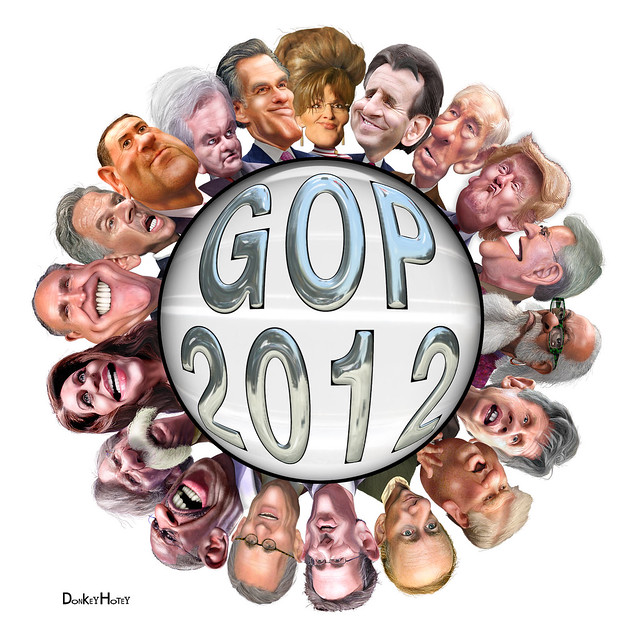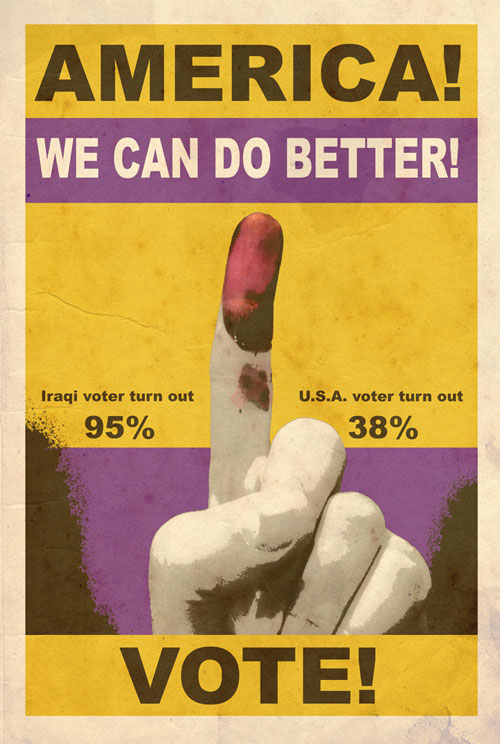
A Closer Look at the Jan. Jobless Numbers: Are They ‘Being Made Up?’
You may recall that major media outlets rejoiced and the markets jumped last Friday when the January jobs report was released.
“Labor Department today lowered the U.S. unemployment rate by two-tenths of a point to 8.3 percent, the lowest it’s been since February 2009,” Emily Knapp of Wall St. Cheat reported, “January data showed nonfarm payrolls to have risen a whopping 243,000, wildly exceeding even the most optimistic of economists’ projections.”
However, although the markets did indeed react positively to the good news, many analysts were skeptical of the data in the report.
“A month ago, we joked when we said that for Obama to get the unemployment rate to negative by election time, all he has to do is to crush the labor force participation rate to about 55 [percent],” editors at Zero Hedge wrote.
“Looks like the good folks at the BLS heard us: it appears that the people not in the labor force exploded by an unprecedented record 1.2 million. No, that’s not a typo: 1.2 million people dropped out of the labor force in one month!”
What does this mean?
Zero Hedge explains:
So as the labor force increased from 153.9 million to 154.4 million, the non institutional population increased by 242.3 million meaning, those not in the labor force surged from 86.7 million to 87.9 million. Which means that the civilian labor force tumbled to a fresh 30 year low of 63.7% as the BLS is seriously planning on eliminating nearly half of the available labor pool from the unemployment calculation.
Even conservative radio talk show host Rush Limbaugh weighed in on the report, claiming that the data was “corrupt as it can be” because the Labor Force Participation Rate has been repeatedly adjusted.
Is Limbaugh out of line on this?
“After countless attempts to discredit or defend Friday’s jobs report, we can all agree on one thing: The data is complicated,” Gus Lubin of Business Insider writes. “So complicated that the BLS could make the economy look better than it was and no one would be sure.”
David Stockman
That’s more or less what David Stockman, former budget director for President Ronald Reagan, wrote in an email to former hedge fund manager Bruce Krasting.
On his blog “My Take on Financial Events,” Krasting wrote, “Is the current [Labor Force Participation Rate] a temporary phenomenon, or is this the ‘New Normal?’”
Krasting believes that if the current Labor Force Participation Rate (LFPR) is the “new normal,” it could have severe – even dangerous – effects on the economy.
Why?
“Virtually all of the economic models used by CBO, OMB, SSA and private economists are assuming that the long-term LFPR will be in the mid-to upper 60s. The consensus is 2-3 [percent] higher than where it is today,” Krasting writes.
“If you plug in a rate of 63 [percent] versus 67 [precent] over the next ten-years, it makes a huge difference on the size of the deficit and the public debt. It would cause the deficits at Social Security and Medicare to explode. The percentage of GDP attributable to the government would inevitably rise. The economy, and society in general, would be socialized [emphasis added],” Krasting writes.
In response to Krastings’ criticism of the jobs report, Stockman writes: “…if you spend a little time with these numbers you will know that they are being made up.”
Here’s the email (via Wall Street Examiner):
…I’m wondering if this goes much deeper. I don’t particularly believe in tin foil hats, but all of these mainstream economists treat the BLS and BEA data like it’s holy writ—when it’s evident that the reports are so massaged, estimated, deemed, revised, re-bench marked and seasonally adjusted that any month-to-month change has a decent chance of being noise. What deep secret might they be hiding?
So on the labor force participation rate they say, “No it didn’t go down in January because the 2012 numbers are re-bench marked for the 2010 census,” but for some reason the BLS didn’t bother to update the 2011 civilian population numbers, including December. Thus, the BLS published apples-to-oranges numbers on this particular variable and the footnote says the December participation rate would have been the same as January, if they had revised it!
Yet on another variable— the establishment survey jobs count—they were also busy re-benchmarking–but here they did update the originally reported numbers for every month of 2011. Even then, it is hard to say what got updated because the originally reported numbers each month are then revised during the next two reporting months—with any excess or shortfall reallocated to earlier months outside the three month window, which are not published on a revised basis, even though they have been revised! This reflects a wacko thing called the concurrent seasonal adjustment method.
… your point is that the longer-term trend of the labor force participation rate is really bad, and this truth is absolutely validated by the January report. Except it would have been equally bad in December had it been reported with the new census data…
But the mainstream narrative never gets to the trend. In this case, the plain fact is that we are warehousing a larger and larger population of adults who are one way or another living off transfer payments, relatives, sub-prime credit, and the black market. My suspicion is that this negative trend and many others like it get buried by the monthly change chatter from mainstream economists and on bubble vision, and that these monthly deltas are so heavily manipulated as to be almost a made-up reality. Call it the economists’ Truman Show.
…
In short, if you spend a little time with these numbers you will know that they are being made up. Funny thing that I remember during the depths of the 1982 recession Reagan read in Human Events one night that the seasonally adjusted numbers were being manipulated and one should look at the unadjusted numbers, instead. The next morning during an economic update briefing Reagan said, he wanted to talk about the “unadjusted” unemployment rate. Marty Feldstein turned white as a ghost, and then talked him out of it. Hmmm!
People line up at a Workforce Plus job fair, Thursday, March 26, 2009, in Tallahassee, Fla. 75,000 Floridians lost their jobs in February. The state's unemployment rate rose to 9.4 %, the highest since 1976. (Photo: AP)
Gallup: These Are the Most ‘Economically Confident’ States
Gallup has released an intriguing report that ranks the most “economically confident” states in America.
And although the report lists the most “confident” states, don’t be fooled into thinking these areas actually believe that the U.S. economy is improving. On the contrary, the report is careful to point out that, nationally speaking, faith in the U.S. economy is slipping.
In fact, out of all the areas surveyed, the place with the highest confidence rating (the District of Columbia) isn’t even a state!
“Economic confidence dropped in all states . . . in 2011, reflecting the overall decline nationally,” Gallup reports. “The declines range from a low of 3 points in Idaho and West Virginia to a high of 22 points in Delaware.”
Overall, two-thirds of the participants in the Gallup phone survey believe that the economy is getting worse, according to the data.
What does this mean?
“Americans overall and in every state remain more negative than positive about the economy, creating a challenge for President Obama as he seeks re-election this year, given the strong relationship between economic conditions and an incumbent’s re-election success,” Gallup reports.
It continues:
“On a near-term basis, however, economic confidence picked up in January of this year, perhaps foretelling a more positive uptick to come in 2012. Americans are also substantially more confident about the economy now than they were in the year Obama was elected. Thus, it is not clear if voters will reward him for the signs of economic improvement that have come in recent years, or hold him accountable for the fact that the economy is still struggling nearly four years after he took office.”
Perhaps before any conclusions are drawn from the Gallup report, a few things should be pointed out.
First, as mentioned several times on The Blaze, before accepting survey results, one should take into account the possibility of “sampling errors.” That is, one must bear in mind of the likelihood of skewed polling data.
Second, as the Washington Post’s Ezra Klein notes, there are some rather inexplicable results in the Gallup report:
… residents of Washington are more optimistic than, well, anyone else. Our Index is -4. The next-most optimistic state, North Dakota, is at -26. That’s rather odd, given that North Dakota’s unemployment rate is 3.4 percent, while the District of Columbia’s is stuck above 10 percent.
Indeed, that is odd.
“One possibility is that the poll is wrong,” Klein writes, “Another is that the political nature of the economic crisis leaves residents of Washington feeling more in control than residents of other states.”
Echoing the sentiments of Mr. Klein, even Gallup is slightly confused by the results: “There are no clear patterns in the states that rank in the top and bottom 10 in economic confidence. For example, the top 10 states vary by region and political leanings, including the most (Hawaii, along with D.C.) and least (Utah) Democratic states.”
This begs the obvious question: how did Gallup structure its phone survey?
Gallup explains:
Results are based on telephone interviews conducted as part of Gallup Daily tracking January 1-December 31, 2011, with a random sample of 174,639 adults, aged 18 and older, living in all 50 U.S. states and the District of Columbia.
Interviews are conducted with respondents on landline telephones and cellular phones…Each sample includes a minimum quota of 400 cell phone respondents and 600 landline respondents per 1,000 national adults, with additional minimum quotas among landline respondents by region. Landline telephone numbers are chosen at random among listed telephone numbers. Cell phone numbers are selected using random-digit-dial methods. Landline respondents are chosen at random within each household on the basis of which member had the most recent birthday.
Okay, now that the methodology is understood, what do the results mean? That is, what does it mean when Gallup says that the District of Columbia has a “-4″ economic confidence rating?
The Index is based on the average differences between Americans’ assessments of current conditions (11% excellent or good and 48% poor in 2011) and their views of whether the economy is getting better (29%) or worse (66%). The Index has a theoretical range of -100 to +100, with negative scores indicating respondents are more negative than positive about the economy.
So, with that in mind, and despite the possibility of “sampling errors,” these are the most economically confident states (and the District of Columbia), according to Gallup:


 Photo 2 of 11
Photo 2 of 11
10. Utah
Economic confidence from -100 – +100: -31


 Photo 3 of 11
Photo 3 of 11
9. Massachusetts
Economic confidence from -100 – +100: -31


 Photo 4 of 11
Photo 4 of 11
8. Iowa
Economic confidence from -100 – +100: -30


 Photo 5 of 11
Photo 5 of 11
7. South Dakota
Economic confidence from -100 – +100: -30


 Photo 6 of 11
Photo 6 of 11
6. Hawaii
Economic confidence from -100 – +100: -30


 Photo 7 of 11
Photo 7 of 11
5. Maryland
Economic confidence from -100 – +100: -28


 Photo 8 of 11
Photo 8 of 11
4. Nebraska
Economic confidence from -100 – +100: -27


 Photo 9 of 11
Photo 9 of 11
3. Minnesota
Economic confidence from -100 – +100: -27


 Photo 10 of 11
Photo 10 of 11
2. North Dakota
Economic confidence from -100 – +100: -26


 Photo 11 of 11
Photo 11 of 11
1. District of Columbia
Economic confidence from -100 – +100: -4

(H/T: The Huffington Post)
Here‘s the Chart That Has One Finance Writer Feeling ’Something Is About to Happen’
Joe Weisenthal is the intrepid finance writer over at Business Insider. He’s usually more plugged in than a Chevy Volt. So when he looks at a chart and says he feels “something is about to happen,” it’s not a bad idea to pay attention. And that’s just what he did.
Here‘s the chart from Weisenthal’s Wednesday-morning post:
I‘ll let Weisenthal explain what he’s seeing;
The above chart is the VIX. Sometimes it’s called the “fear index”. Whatever you want to call it, it’s a quick way of looking at how much investors are willing to pay for downside protection in the market. Right now, complacency is high, and nobody wants to pay much for “insurance.”
Once again, we‘re getting close to what’s been a floor for the index (since the crisis) and so it seems inevitable that something is going to come along and jolt everyone awake. [Emphasis added]
In other words, the lower the line on the chart, the more complacent people are. And when people are complacent, they don’t prepare. And that’s usually when something big happens to wake them up.
So what are the risks out there? Check out his post on Business Insider to see.
h/t to the Blaze























No comments:
Post a Comment